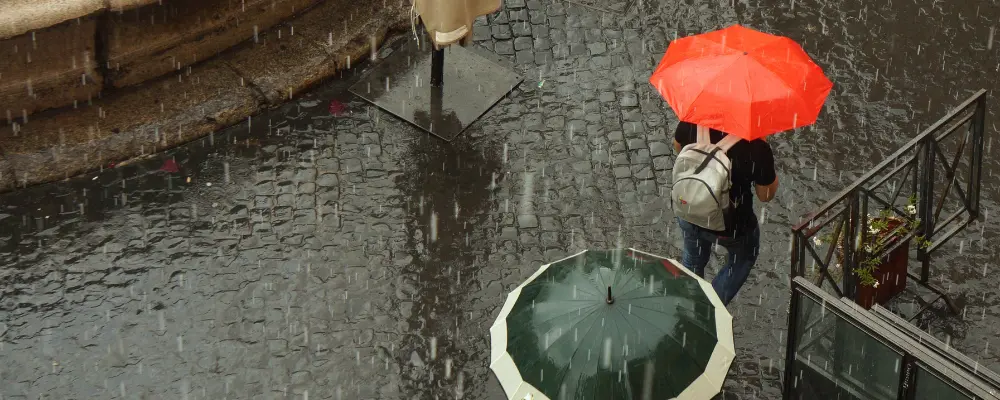Rainwater harvesting is the storage of rainwater for reuse such that it does not get run off and wasted. Rainwater can be collected from roofs and catchment areas and then diverted to the storage area where it can be efficiently stored for reuse. The harvested water can be used for drinking water, household purposes, longer-term storage for future use, and for other purposes such as groundwater recharge.
A rainwater harvesting system follows the below process
Collection through catchments
The rainwater collection is done through catchment areas which are nothing but surfaces over which rain falls directly. It can be a terrace, garden or paved open space, or even a courtyard. Sloping roofs, RCC slabs, weather-sheds, corrugated sheets, and fabricated roofs, all act as catchment areas.
Gutter
At the edges of sloping roofs or fabricated roof structures, channels are installed such that the rainwater flows from these roofs to the channels and from these channels to drain pipes. These channels are known as gutters.
Transportation through conduits
Transportation of rainwater means the proper flow of rainwater from the collection area to the storage area. This is done with the help of pipelines or conduits. These conduits are made of Galvanized Iron (GI) or PVC. Gutters collect the rainwater from the sloping sheds and roofs. These gutters are connected further to pipelines which further carry rainwater from the catchment to the harvesting system and finally into the storage. Terraces and paved grounds have a direct flow of water into the pipelines.
Filtration tank
Rainwater is filtered to remove unwanted dirt and micro-organisms before it enters the storage tank or recharge structure. Various types of filters are available – Charcoal water filters, Sand filters, Horizontal roughing filters, and slow sand filters.
Storage tanks
The rainwater once filtered is ready for direct usage. The filtered water is thus stored in tanks or barrels. The tanks can be designed with RCC or masonry depending on the volume of water to be stored. These tanks need to be carefully placed, either underground or partly underground.
Recharge of groundwater levels
The collected rainwater can also be used to recharge the groundwater levels. Ground recharge is can be done at a shallow level using recharge trenches and permeable pavements. While bore wells and recharge pits are dug deep underground where water can be stored and recharged.

